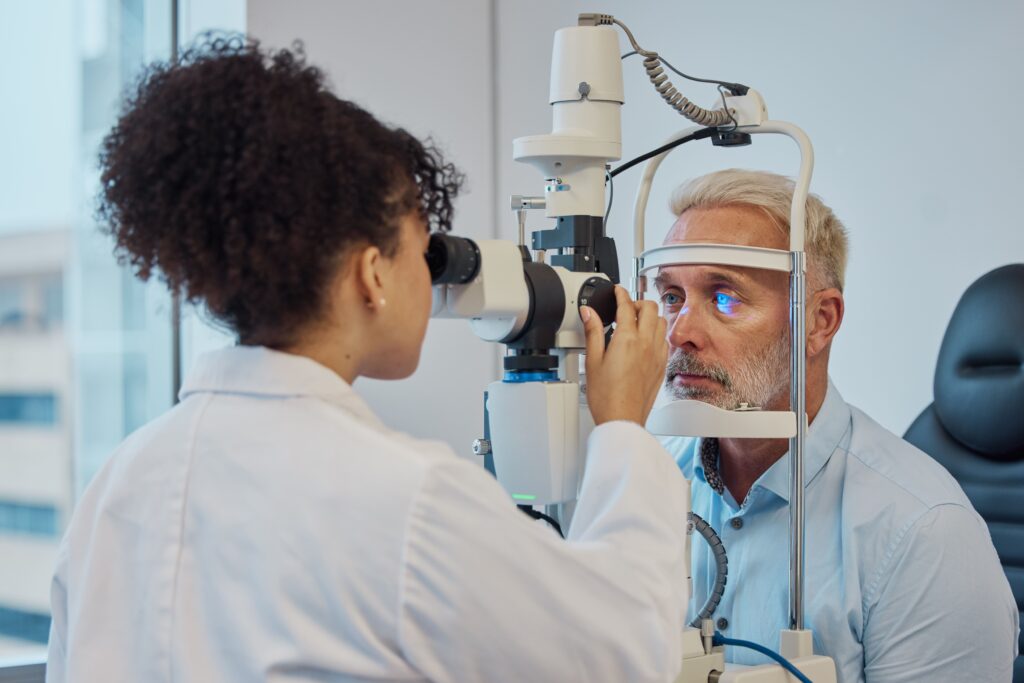All Categories
Featured
Laser eye surgical treatment has changed vision adjustment, using numerous people an alternative to glasses and call lenses. Throughout the years, advancements in technology and methods have actually considerably improved the security, accuracy, and end results of these procedures. Let's explore the cutting-edge growths forming the future of laser eye surgery.
One of the most revolutionary improvements is wavefront-guided LASIK. This innovation makes use of in-depth 3D mapping of the eye to determine special flaws in a person's vision.
![]()
Unlike LASIK, which includes developing a corneal flap, SMILE only requires a tiny cut to eliminate a slim layer of cells (lenticule) from the cornea. This technique maintains corneal strength and lowers the risk of dry eyes.
![]()
The introduction of femtosecond lasers has revolutionized corneal surgical procedure. These ultra-fast lasers run with extraordinary precision, permitting doctors to develop smoother and extra foreseeable lacerations. In LASIK treatments, femtosecond lasers are utilized to create the corneal flap with unequaled precision, reducing problems and enhancing recovery times.
Topography-guided laser therapies concentrate on resolving abnormalities in the corneal surface. This advancement is especially handy for people with corneal marks or uneven astigmatism. By creating a much more uniform corneal shape, topography-guided treatments can enhance both vision top quality and client contentment.
Expert system (AI) is progressively being integrated into laser eye surgical treatment. AI-driven algorithms analyze huge quantities of information to help cosmetic surgeons in planning and executing treatments with better precision. This modern technology guarantees optimum therapy criteria and minimizes the likelihood of human mistake.
Thanks to improvements in modern technology, more people are now qualified for laser eye surgery. Techniques like SMILE and topography-guided therapies make it possible to treat clients with problems that were previously considered contraindications, such as high refractive mistakes or slim corneas.
Modern laser eye surgical procedure techniques prioritize person convenience and quicker healing. Improved precision decreases tissue damage, minimizing inflammation and allowing individuals to return to their day-to-day activities within days.
While not a refractive surgery in itself, corneal cross-linking has actually come to be a necessary therapy for keratoconus clients. When integrated with laser methods, it can maintain the cornea and enhance vision for those with this dynamic eye condition.
Conclusion
Innovations in laser eye surgical procedure proceed to press the boundaries of what's feasible in vision correction. From personalized treatments to AI-driven developments, these modern technologies are making surgical procedure more secure, more efficient, and easily accessible to a bigger series of patients. If you're thinking about laser eye surgery, seek advice from with a certified ophthalmologist to learn just how these developments can profit your details requirements and lifestyle.
- Personalized Wavefront-Guided LASIK
One of the most revolutionary improvements is wavefront-guided LASIK. This innovation makes use of in-depth 3D mapping of the eye to determine special flaws in a person's vision.
- SMILE: Little Cut Lenticule Removal

Unlike LASIK, which includes developing a corneal flap, SMILE only requires a tiny cut to eliminate a slim layer of cells (lenticule) from the cornea. This technique maintains corneal strength and lowers the risk of dry eyes.
- Femtosecond Laser Modern Technology

The introduction of femtosecond lasers has revolutionized corneal surgical procedure. These ultra-fast lasers run with extraordinary precision, permitting doctors to develop smoother and extra foreseeable lacerations. In LASIK treatments, femtosecond lasers are utilized to create the corneal flap with unequaled precision, reducing problems and enhancing recovery times.
- Topography-Guided Treatments
Topography-guided laser therapies concentrate on resolving abnormalities in the corneal surface. This advancement is especially handy for people with corneal marks or uneven astigmatism. By creating a much more uniform corneal shape, topography-guided treatments can enhance both vision top quality and client contentment.
- Artificial Intelligence in Laser Surgical Treatment
Expert system (AI) is progressively being integrated into laser eye surgical treatment. AI-driven algorithms analyze huge quantities of information to help cosmetic surgeons in planning and executing treatments with better precision. This modern technology guarantees optimum therapy criteria and minimizes the likelihood of human mistake.
- Expanded Candidacy for Surgery
Thanks to improvements in modern technology, more people are now qualified for laser eye surgery. Techniques like SMILE and topography-guided therapies make it possible to treat clients with problems that were previously considered contraindications, such as high refractive mistakes or slim corneas.
- Faster Recuperation Times
Modern laser eye surgical procedure techniques prioritize person convenience and quicker healing. Improved precision decreases tissue damage, minimizing inflammation and allowing individuals to return to their day-to-day activities within days.
- Corneal Cross-Linking for Keratoconus
While not a refractive surgery in itself, corneal cross-linking has actually come to be a necessary therapy for keratoconus clients. When integrated with laser methods, it can maintain the cornea and enhance vision for those with this dynamic eye condition.
Conclusion
Innovations in laser eye surgical procedure proceed to press the boundaries of what's feasible in vision correction. From personalized treatments to AI-driven developments, these modern technologies are making surgical procedure more secure, more efficient, and easily accessible to a bigger series of patients. If you're thinking about laser eye surgery, seek advice from with a certified ophthalmologist to learn just how these developments can profit your details requirements and lifestyle.
Latest Posts
Why Soffit and Fascia Issue to Your Home's Wellness
Published Apr 20, 25
1 min read
Enthusiasts Sportsbook: Where Sports Betting Meets Home Entertainment
Published Apr 20, 25
1 min read
Green Restroom Upgrades Made Easy
Published Apr 19, 25
1 min read